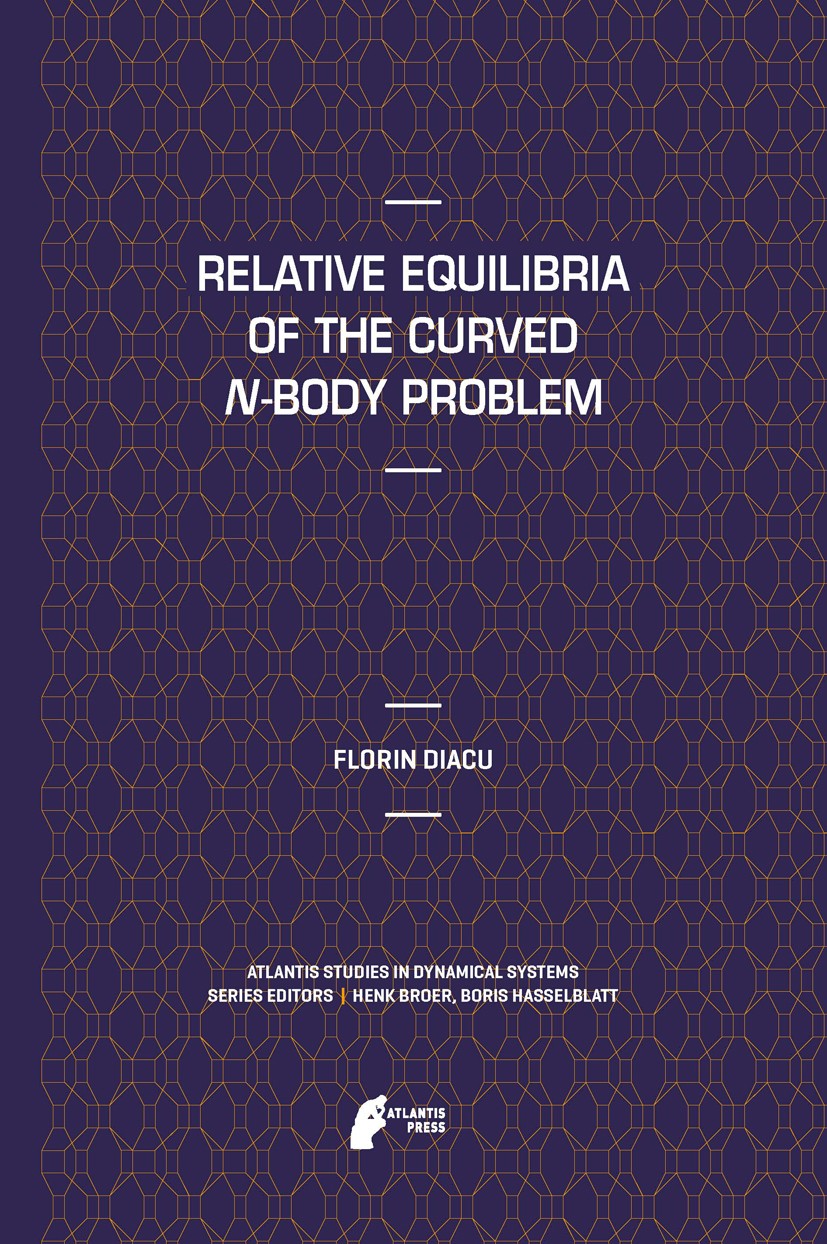| 书目名称 | Relative Equilibria of the Curved N-Body Problem | | 编辑 | Florin Diacu | | 视频video | http://file.papertrans.cn/827/826181/826181.mp4 | | 概述 | Understanding of the geometric shape of the universe.New mathematical results.Bridges laid between several fields of mathematics.Opening of new directions of research.Clearly exposed material.Includes | | 丛书名称 | Atlantis Studies in Dynamical Systems | | 图书封面 |  | | 描述 | The guiding light of this monograph is a question easy to understand but difficult to answer: {What is the shape of the universe? In other words, how do we measure the shortest distance between two points of the physical space? Should we follow a straight line, as on a flat table, fly along a circle, as between Paris and New York, or take some other path, and if so, what would that path look like? If you accept that the model proposed here, which assumes a gravitational law extended to a universe of constant curvature, is a good approximation of the physical reality (and I will later outline a few arguments in this direction), then we can answer the above question for distances comparable to those of our solar system. More precisely, this monograph provides a mathematical proof that, for distances of the order of 10 AU, space is Euclidean. This result is, of course, not surprising for such small cosmic scales. Physicists take the flatness of space for granted in regions of that size. But it is good to finally have a mathematical confirmation in this sense.Our main goals, however, are mathematical. We will shed some light on the dynamics of N point masses that move in spaces of non- | | 出版日期 | Book 2012 | | 关键词 | Celestial mechanics; Dynamical systems; N-body problem; Spaces of constant curvature; non-Euclidean geom | | 版次 | 1 | | doi | https://doi.org/10.2991/978-94-91216-68-8 | | isbn_softcover | 978-94-6239-038-6 | | isbn_ebook | 978-94-91216-68-8Series ISSN 2213-3526 Series E-ISSN 2213-3534 | | issn_series | 2213-3526 | | copyright | Florin Diacu 2012 |
The information of publication is updating

|
|
 |Archiver|手机版|小黑屋|
派博传思国际
( 京公网安备110108008328)
GMT+8, 2025-11-12 00:08
|Archiver|手机版|小黑屋|
派博传思国际
( 京公网安备110108008328)
GMT+8, 2025-11-12 00:08


